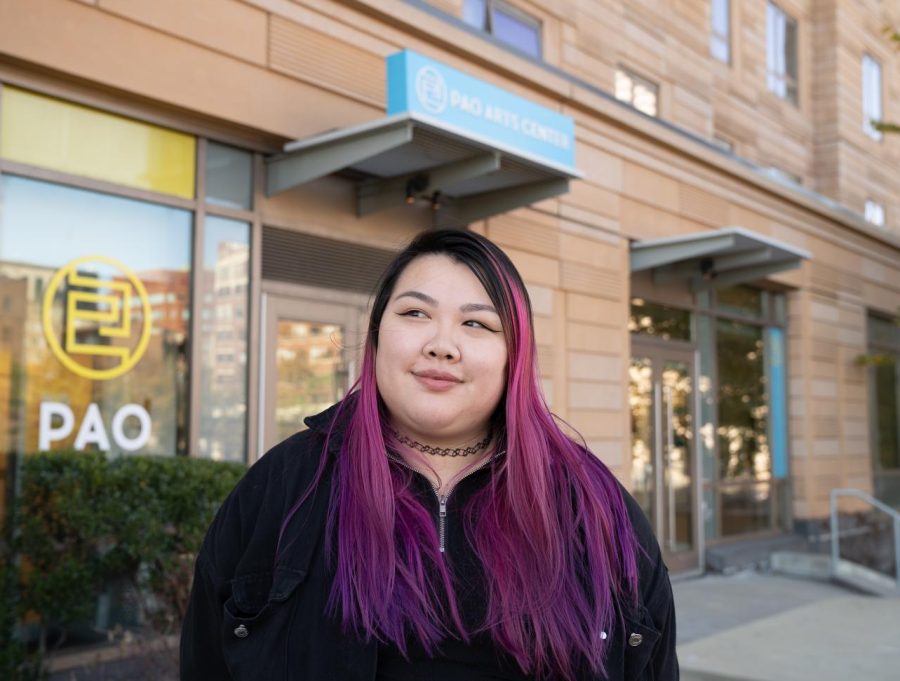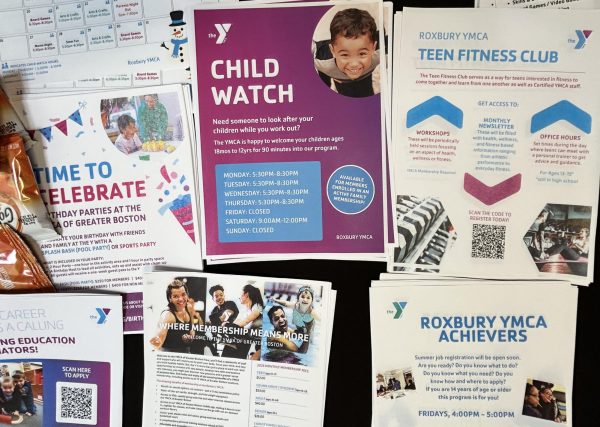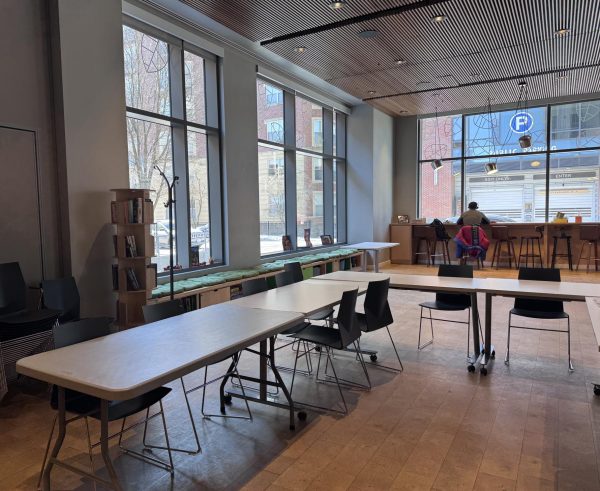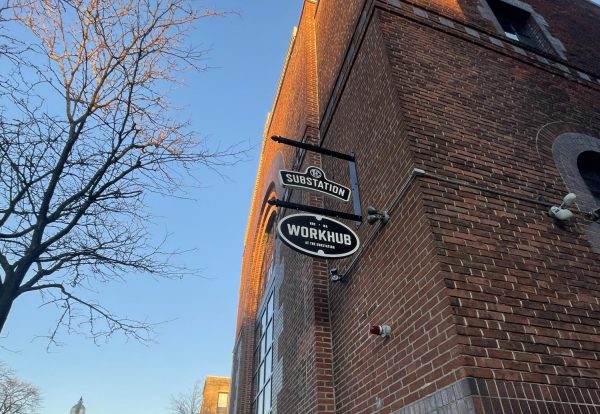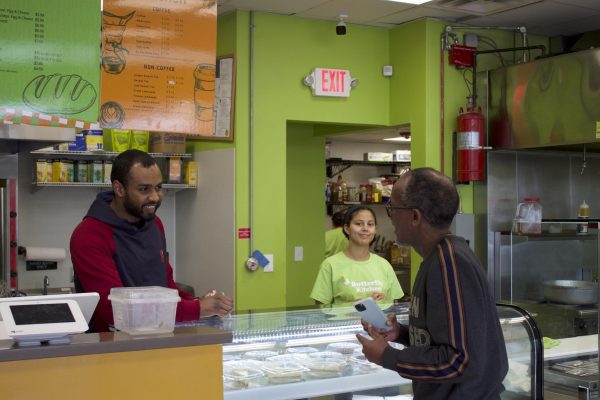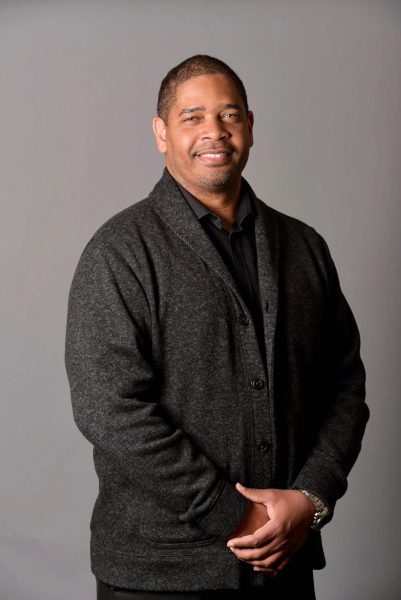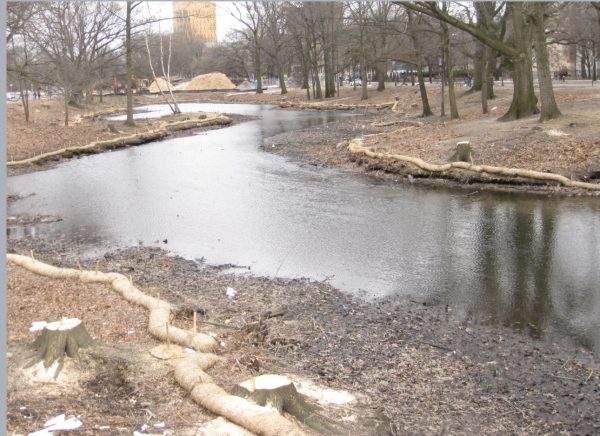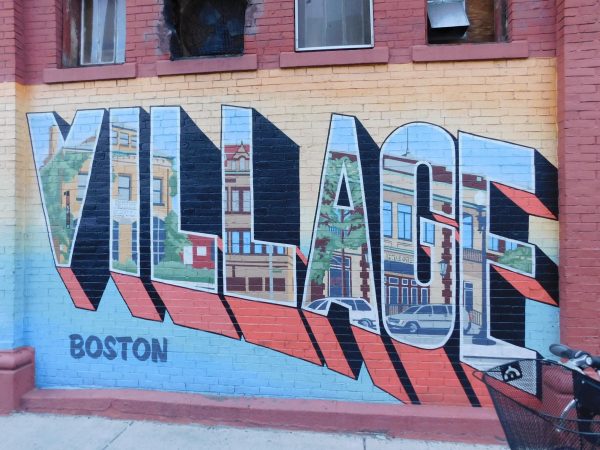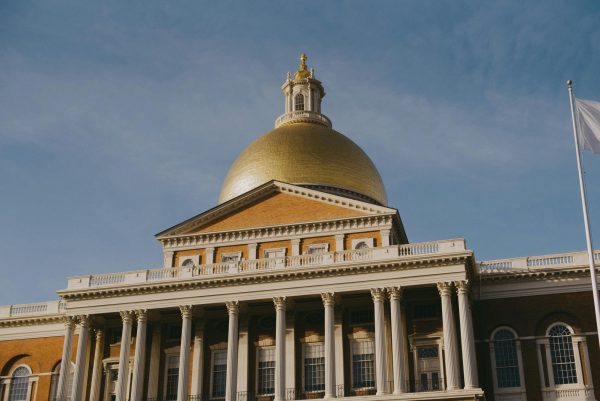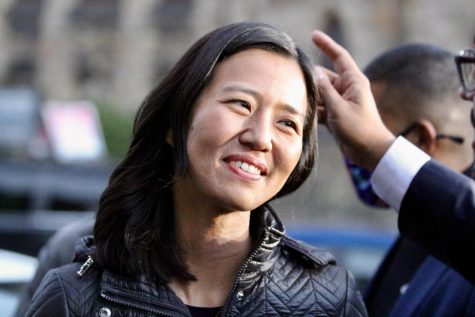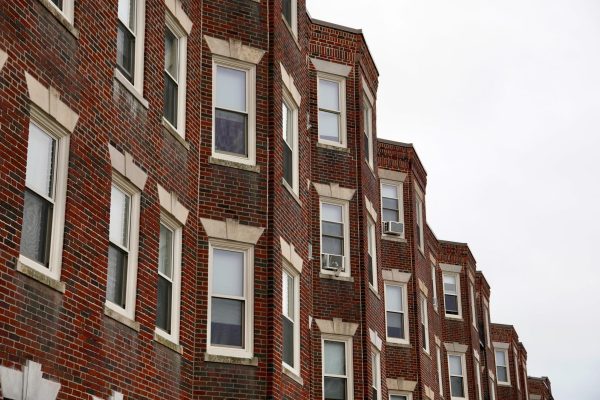Chinatown turned canvas: Local artists create murals for Pao Arts Center’s “Experience Chinatown” festival
Photo: Kelly Chan
Ashley Yung, Pao Arts Center’s theater and performance programming manager
Since Aug. 26, Chinatown businesses have become pages of a coloring book for local artists.
For the last two months, the Pao Arts Center has hosted its fifth annual “Experience Chinatown” festival, featuring murals over the facades of 10 of the neighborhood’s beloved establishments, including Happy Lamb and Dumpling Cafe. The festival also includes three separate days of performance events throughout September with a variety of dancers and musicians. This year, these art installations will last until Oct. 28, and all correlate to the theme, “What makes a community special?”
Created in 2017, the Pao Arts Center aims to create space for the arts and for the community to gather and is part of the Boston Chinatown Neighborhood Center in partnership with Bunker Hill Community College. Throughout the year, it hosts a variety of public art exhibits, such as the recent “YEAR OF THE TIGER” installation in Mary Soo Hoo Park, in addition to films, performances, and art classes.
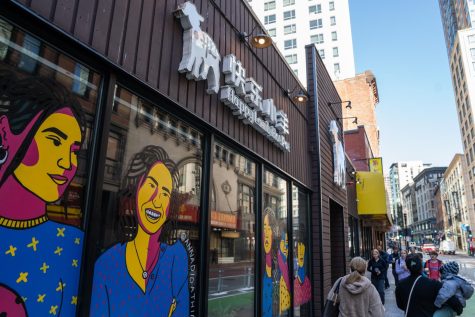
In the last few years, the “Experience Chinatown” festival has shifted, as it initially launched as a one-day event of performances and activities — without the mural project. However, due to COVID-19, the Pao Arts Center adapted the festival in 2020 to focus on murals, as a safer means of enjoying art in the community during the pandemic.
The Scope recently talked with Ashley Yung, the center’s Theater and Performance Programming Manager, to learn more about this year’s murals, the festival as a whole, and how it impacts the Chinatown community. The following conversation has been edited for length and clarity.
Tell me about your role at the Pao Arts Center.
I am in charge of curating and organizing performances at the arts center in our theater. I work very closely with Cynthia Woo, our director, to make sure that there’s a good balance of dance, theater, music and other performance opportunities.
I’ve been working in my position for the past two and a half years, and it’s changed over time. I started right at the beginning of the pandemic, and only very recently have I actually been doing more [work in curating] performances. For the first year of my job, I was doing a lot of virtual programming and trying to shift Pao Arts Center by still trying to make art happen and continue to support our artists in our community virtually in a way that felt safe. That was very important to us. But now things are changing a little bit, so we’re back to performances in person.
Tell me about the history of this festival. How did “Experience Chinatown” come to fruition?
“Experience Chinatown” used to be a one-day festival, and it’s only grown because of the pandemic. We were trying to find a way to do it during the pandemic and still make it safe for the community.
The times were really hard for Chinatown. It was very barren, quiet and sad, and a lot of people lost their businesses. We felt that it was important for us to create life for Chinatown and to create a little bit more liveliness for the community at that time. We sat together as a team and brainstormed, ‘How do we make this happen?’
The basis of “Experience Chinatown” used to be performances, and we weren’t even sure we could do that. Then we were like, ‘How about working with businesses? Because that’s the people who are struggling the most right now. We could partner with businesses and maybe do art installations.’ It was an idea, but we weren’t sure how to really execute it because there were some logistics of working with Chinatown businesses.
Year one [of the festival during COVID], a lot of the businesses said no to us because they really didn’t know what we were talking about, but one business did believe in us, Liuyishou Hot Pot. Year two, we had an example of what it could look like, so a few more businesses were able to say yes to us. And this year, people are like, ‘Yeah, go ahead!’
We’ve been doing this for about three years, and every year, it’s been growing a little bit more and more.
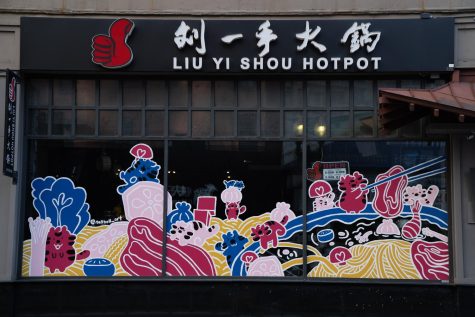
How did you decide on this year’s theme?
In year one, we didn’t really have a theme because we were still experimenting, so in year two, we asked a question to the artists to help create some streamlining as to what the murals look like. Last year, it was: How do you take care of a community in 2021?
This year, I think ‘What makes communities special?’ makes a really compelling question that everyone has a different answer to, and you can feel inspired by other people’s answers.
For example, Anna Dugan’s piece on Happy Lamb. Her answer was ‘the people in the community,’ so she painted the faces of people in the community, and it makes you think about the people in your community that make it special for you.
This theme is actually associated with ResLab, which is a different program that we do in collaboration with the Asian Community Development Corporation to match residents with artists to create this art project that will be installed in Chinatown at different locations every year. ResLab always has a theme that they work off, and since ResLab usually opens in the summer and “Experience Chinatown” also starts in the summer, we market it together.
What was your process in curating the artists for this event?
For visual artists, we put out an application, and they answer a question: What’s your relationship with the Chinatown community? It’s a good way to gauge how deeply they feel about this festival.
We don’t ask them to answer the same question as the theme because that can be developed since we match the artists with the businesses and their answer may change when they meet the businesses and see the space that they’re working on.
The difficult thing is matching them with the businesses because we have to find exactly the right person that might respond well to a space. We know some of the businesses now and the type of pieces and styles that they prefer on their business front.
In terms of performance artists, we have a ton of artists that we love working with, and this year we had an idea of people that were in our scope that we wanted to work with again and also some new artists that we’ve noticed through social media.
Like Shaw Pong Liu performed with our inaugural artist in residence five years ago, and she’d been performing with us on and off for five years. Then, we matched her up with Maddie Lam, who had never performed with us, but I thought would be a really cool contrast to her. It created a really beautiful show.
What is special about the murals this year?
The artists this year were really unique in the sense that they were really supportive of each other. It reminded me that what really makes a community special is the people within it. The artists wanted to be more interactive with each other this year than I’ve ever noticed.
There are some common themes and imagery that popped up that weren’t planned but were similar. It was so unintentional that these artists responded so well to each other, and their pieces lined up so well.
For example, at Crave Chinatown, Jenny Tran and Victoria Lai’s piece involved cranes and birds as part of their answer as a symbol for the community. Katelyn Lipton’s piece at WakuWaku, which is right down the street, also involved birds. Her answer was a little bit different, but the imagery was so similar, and the answers were so cohesive unintentionally.
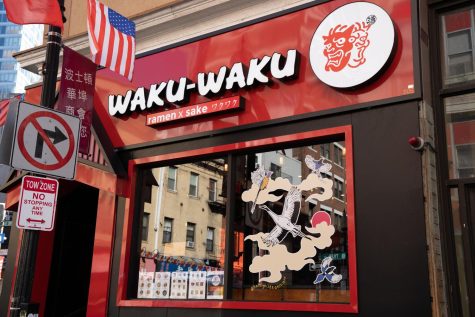
What do you love most about “Experience Chinatown”?
What I love most about is that we’re doing it outdoors, and we’re bringing these performances into the community, into people’s lives. They may not have planned to come to a festival, but they walk by one and stop, get to see a performance, get to learn a few dance moves, a few kung fu moves. They just have that moment of feeling connected with the arts and with the community.
One guy came to us on one of our performance days and said, ‘I grew up in Boston, but I live in Texas, and I wish I had a community like this in Texas. When I go home, I’m going to try to see if there is a community like this because this is really special.’ It’s comments like this that make us get a little bit more fuel into our system to keep doing this.
With each year’s “Experience Chinatown”, what do you look forward to most?
It’s this cross-section of all the different types of people that we get to interact with. Because in our typical programming throughout the year, we invite artists and audiences to come directly into our space. With “Experience Chinatown”, it’s our opportunity to reach new audiences, reach new artists, and also work directly with the community.
It’s that unique intersection of doing work with the businesses that make Chinatown alive and special and that create these smells and flavors that make it feel like home, and also connecting them with artists and audiences that may not typically come across us.
“Experience Chinatown” brings us into the community, brings us to the businesses, and brings us to the audiences that we hope to impact.
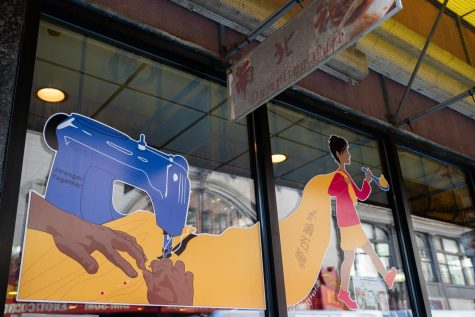
Here is the full list of murals and their locations:
- Pao Arts Center (99 Albany St.): “Coffee is always beautiful” by Amanda Beard Garcia
- Crave Chinatown (75 Kneeland St.): “Wing to Wing” by Victoria Lai and Jenny Tran
- APM Coffee (99 Kneeland St.)
- WakuWaku (2 Tyler St.): “In the Clouds” by Katelyn Lipton
- Chin Park (Chinatown park on the Rose Kennedy Greenway)
- Q Restaurant (660 Washington St.): “Together Everywhere” by Ponnapa Prakkamakul
- Happy Lamb (693 Washington St.): “Mga Babae Ngayon At Kahapon – Women Today and Yesterday” by Anna Dugan
- Dumpling Cafe (695 Washington St.): “Intergenerational Persistence” by Maria Fong
- Liuyishou Hot Pot (702 Washington St.): “Tigers Hot Pot Together” by Nell Valle
- Boston Chinatown Neighborhood Center (38 Ash St.): “A Soft Place to Land” by Ashley

